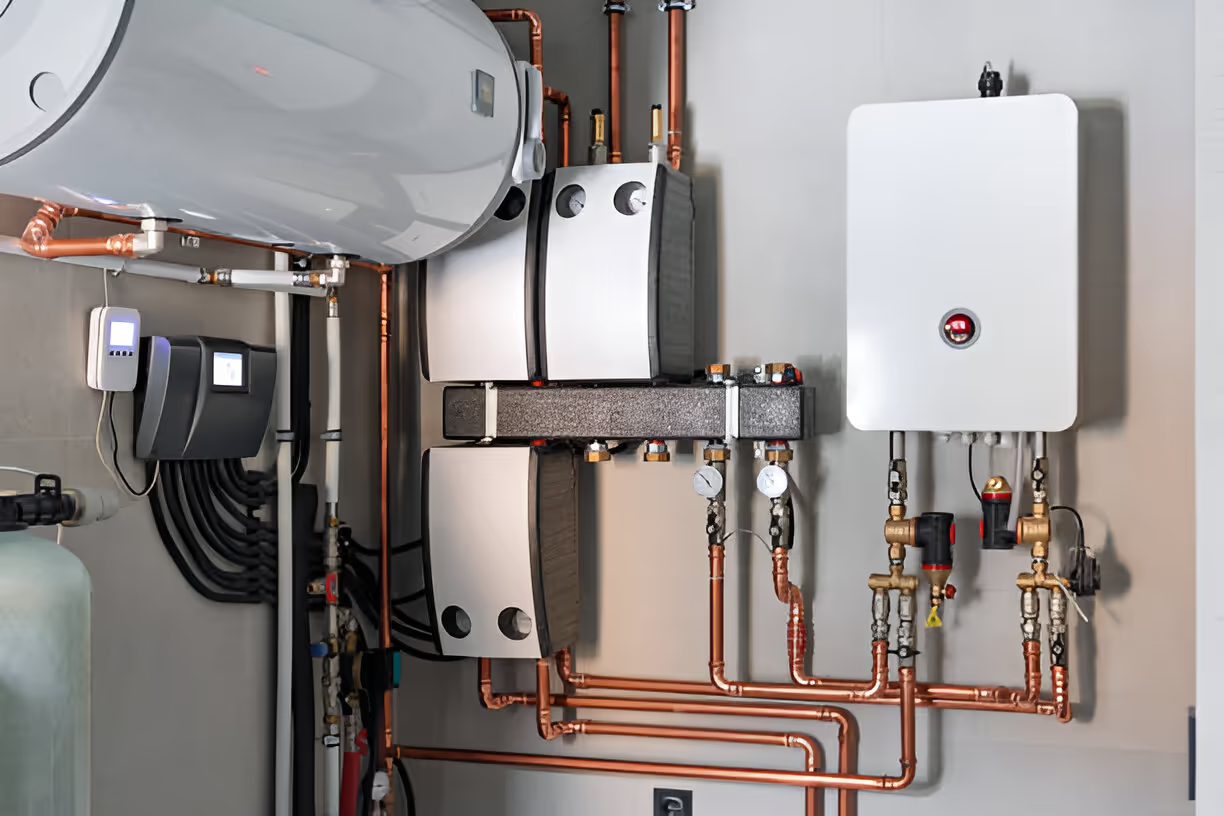Gas Furnace Maintenance in Ahwatukee, AZ
A properly maintained gas furnace keeps your Ahwatukee home safe, comfortable, and energy efficient through the cooler months. Even though the Phoenix area has mild winters compared with northern states, nights can get chilly and occasional cold snaps mean your furnace must run reliably. Regular professional maintenance focused on combustion, burners, gas lines, heat exchanger integrity, venting and carbon monoxide testing reduces breakdown risk, maintains efficiency, and ensures safety-compliant operation.

Why professional gas furnace maintenance matters in Ahwatukee
Ahwatukee’s desert environment presents two maintenance realities: long cooling seasons with intermittent heating use, and high dust during monsoon and windy periods. Furnaces that sit idle for months are more likely to develop dirty burners, sticky safety controls, and corroded vent components. Seasonal dust buildup also increases ignition problems and air restriction. Certified technicians performing safety-first inspections protect your family from carbon monoxide exposure, identify failing components early, and keep your system operating within manufacturer and code requirements.
Common gas furnace issues in Ahwatukee homes
- Dirty or clogged burners causing yellow or unstable flames and poor combustion
- Cracked or corroded heat exchanger creating potential CO leakage risk
- Blocked or improperly sloped venting and flue problems that impair draft
- Gas line or valve issues, including loose fittings or incorrect manifold pressure
- Faulty ignition components (standing pilot, hot surface ignitor, or pilot assembly)
- Malfunctioning safety controls or limit switches that cause short cycling
- Accumulated dust and debris restricting airflow or fouling sensors
- Improper thermostat calibration leading to inefficient cycling
What a full maintenance visit includes
Licensed technicians follow a safety-compliant, methodical checklist tailored to gas furnaces. A comprehensive maintenance visit in Ahwatukee typically includes:
- Visual inspection of furnace cabinet, burners, and combustion chamber
- Combustion analysis or flame inspection to verify proper burner performance and fuel-air mixture
- Heat exchanger assessment (visual inspection and testing for signs of cracks or corrosion)
- Gas line and valve checks for leaks, proper connections, and correct manifold pressure
- Venting and flue evaluation — checking for obstructions, correct slope, and secure terminations
- Carbon monoxide (CO) testing at the unit and in the service area to confirm safe operation
- Ignition system inspection and cleaning (pilot assembly or electronic ignition components)
- Safety control tests: limit switches, pressure switches, and rollout switches
- Filter inspection and recommendation/replacement guidance; blower wheel and motor cleaning as needed
- Thermostat calibration and system performance check during a full heating cycle
- Documentation of findings and prioritized recommendations for repairs or parts replacement
Diagnostic methods technicians use
Technicians combine visual checks with measurable diagnostics to provide conclusive results:
- Combustion analyzer readings for oxygen, CO, and CO2 to ensure efficient and safe combustion
- Gas leak detection using electronic leak detectors or soap testing at accessible joints
- Differential pressure and draft measurements on the flue to confirm proper exhausting
- Electrical diagnostics using multimeters to verify voltage, control signals, and component continuity
- Visual and, when needed, dye or smoke testing of vent terminations to confirm unobstructed flow
Common repairs and solutions explained
- Burner cleaning and adjustment: Removing soot and realigning flame to achieve stable, blue combustion for efficiency and safety.
- Heat exchanger repair guidance: Minor corrosion may be mitigated, but visible cracks or separations typically require replacement to eliminate CO risk.
- Venting repairs: Re-securing, re-pitching, or replacing sections of flue to restore draft and prevent backflow of combustion gases.
- Gas line tightening and valve servicing: Correcting leaks or improper pressures to prevent hazards and ensure consistent heating.
- Ignitor or pilot replacement: Replacing worn ignitors or pilot assemblies to restore reliable ignition and reduce cycling delays.
- Safety control replacement: Updating limit switches, pressure switches, or rollout sensors that fail to operate within safe tolerances.
- Blower and airflow restoration: Cleaning blower wheels and ensuring proper filter fit to improve heat transfer and reduce motor wear.
Recommended service intervals for Ahwatukee homes
- Annual comprehensive inspection and tune-up before the heating season (late fall) is standard and recommended.
- Filter checks every 1–3 months; more frequently during monsoon or when pets and high dust are present.
- Mid-season visual check or system diagnostic if you notice unusual odors, noises, short cycling, or reduced warmth.
- Immediate service if carbon monoxide alarm activates or you suspect a gas leak.
Safety and compliance
All combustion testing, gas line work, and safety control adjustments should be performed by licensed technicians following local codes and manufacturer requirements. Certified professionals use calibrated instruments to verify combustion and CO levels, maintain accurate service records for warranties, and document any safety risks that require urgent attention.
What you gain from regular maintenance
- Safer operation with lower risk of carbon monoxide infiltration
- Improved reliability so your furnace starts and runs when needed during cold nights
- Better efficiency and potential reduction in heating-related energy costs
- Extended equipment life and reduced likelihood of costly emergency repairs
- Clear documentation of system condition for home resale or warranty purposes
Practical homeowner tips for Ahwatukee residents
- Schedule annual maintenance in early fall to catch issues before overnight temperatures drop.
- Keep the area around the furnace free of storage and dust build-up; seal attic or crawlspace access points to reduce dust ingress.
- Replace or clean filters more often during dusty seasons and after monsoon storms.
- If you smell gas, evacuate the home and contact your gas utility immediately; do not operate electrical switches or appliances.
Regular, licensed gas furnace maintenance in Ahwatukee, AZ protects your household, improves comfort, and preserves equipment value. A professional inspection with combustion and CO testing, combined with routine airflow and component care, ensures your furnace meets safety standards and runs dependably when you need it most.






